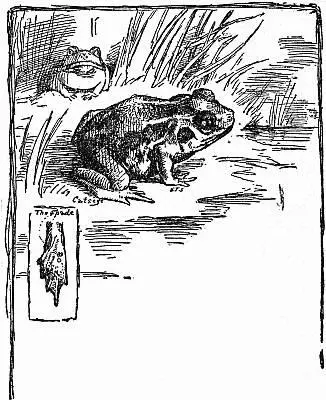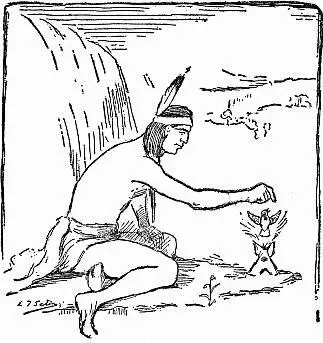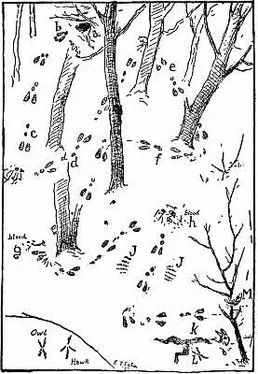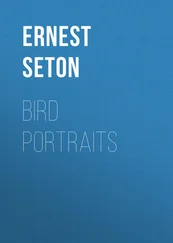Ernest Seton - Woodland Tales
Здесь есть возможность читать онлайн «Ernest Seton - Woodland Tales» весь текст электронной книги совершенно бесплатно (целиком полную версию без сокращений). В некоторых случаях можно слушать аудио, скачать через торрент в формате fb2 и присутствует краткое содержание. Год выпуска: 2007, Жанр: Природа и животные, Сказка, на английском языке. Описание произведения, (предисловие) а так же отзывы посетителей доступны на портале библиотеки ЛибКат.
- Название:Woodland Tales
- Автор:
- Жанр:
- Год:2007
- ISBN:нет данных
- Рейтинг книги:4 / 5. Голосов: 1
-
Избранное:Добавить в избранное
- Отзывы:
-
Ваша оценка:
- 80
- 1
- 2
- 3
- 4
- 5
Woodland Tales: краткое содержание, описание и аннотация
Предлагаем к чтению аннотацию, описание, краткое содержание или предисловие (зависит от того, что написал сам автор книги «Woodland Tales»). Если вы не нашли необходимую информацию о книге — напишите в комментариях, мы постараемся отыскать её.
Woodland Tales — читать онлайн бесплатно полную книгу (весь текст) целиком
Ниже представлен текст книги, разбитый по страницам. Система сохранения места последней прочитанной страницы, позволяет с удобством читать онлайн бесплатно книгу «Woodland Tales», без необходимости каждый раз заново искать на чём Вы остановились. Поставьте закладку, и сможете в любой момент перейти на страницу, на которой закончили чтение.
Интервал:
Закладка:
If you look on the lawns or the fields in springtime, you are sure to find the Prairie-girl. The Guide can show her to you, if you do not know her. But he will call her "Common Dandelion," and I do not know of any flower that has so many things for us children to remember.
If you are learning French, you will see how it got the name "Dandelion"; it used to be written dent de lion; that is, "tooth of a lion"; because its leaves are edged with sharp teeth, like a lion's jaw.
Its golden-yellow flower is said to open when the Swallows arrive from the south, that is, in April; and though it blooms chiefly in springtime it keeps on blooming till long after the Swallows fly away. It certainly thrives as long as the sun shines on it, and fades when the cold dark season comes. But I have seen it out in November; that is, the Dandelion blooms for fully nine months. I do not know of any other flower that does; most of them are done in one month.
When the yellow flower is over, its place is taken by a beautiful globe of soft, white plumes; this is why the story says its golden hair turns white with age. The children believe that this woolly head will tell you the time of day. You hold it up, then pretend you are Father Time blowing her hair away, blow a sharp puff with your breath, then another and another, till the plumes are blown away. If it takes four blows, they say it means four o'clock; but it is not a very true clock.
Some children make a wish, then blow once and say, "this year"; the second time, "next year"; the third time, "some time"; the fourth time, "never." Then begin all over, and keep on as long as any plumes are left, to tell when the wish is coming true.
Now pull the head off the stalk. You will find it leaves a long, open tube that sounds like a trumpet when you blow through it from the small end. If you force your finger into the big end, and keep pushing, you split the tube into two or three pieces; put these in your mouth and they will curl up like ringlets. Some children hang these on their ears for ornaments. Take a stalk for each year of your age; pull its head off. Then you will find that the top end will go into the bottom and make a ring. Use all the stalks you have gathered, to make a chain; now throw this chain into a low tree. If it sticks the first time, your wish will come true this year. Each time it falls puts your wish a year farther away.
This may not be true; but it is a game to play. Some big girls use it, to find out when they are going to be married.
Now dig up the whole plant, root and all—the gardener will be much obliged to you for doing so—take it home, and ask the Guide to make the leaves into a salad; you will find it good to eat; most Europeans eat it regularly, either raw, or boiled as greens.
Last of all, ask the Guide to roast the root, till it is brown and crisp, then grind it in a coffee-mill, and use it to make coffee. Some people think it better than real coffee; at any rate, the doctors say it is much healthier, for it is nourishing food, and does not do one any harm at all. But perhaps you will not like it. You may think all the time you are eating the body of the poor little Prairie-girl, who died of love.
TALE 4
The Cat's-eye Toad, a Child of Maka Ina
When you were little, O Guide! didn't you delight in the tales of gnomes or nibelungen , those strange underground creatures that lived hidden from the light, and busied themselves with precious stones and metals? How unwillingly we gave up those glad beliefs, as we inevitably grew old and lost our fairyland eyes!

The Cat's eye Toad (life size)
But you must not give up all your joyful creeds; you must keep on believing in the weird underground dwarfs; for I am going to tell you of one that the cold calculating Professor Science has at last accepted, and that lives in your own back-yard. That is, the Cat's-eye Toad or Spadefoot. It is much like a common Toad, but a little smoother, the digging spade on its hind foot is bigger and its eye, its beautiful gold-stone eye, has the pupil up and down like that of a Cat, instead of level as in its cousin, the warty Hoptoad.
But the wonderful thing about the Cat's-eye is that it spends most of its life underground, coming out in the early springtime for a few days of the most riotous honeymoon in some small pond, where it sings a loud chorus till mated, lays a few hundred eggs, to be hatched into tadpoles, then backs itself into its underground world by means of the boring machine on its hind feet, to be heard no more that season, and seen no more, unless some one chance to dig it out, just as Hans in the story dug out the mole-gnome.
In the fairy tale the Shepherd-boy was rewarded by the gnome for digging him out; for he received both gold and precious stones. But our gnome does not wish us to dig him out; nevertheless, if you do, you will be rewarded with a golden fact, and a glimpse of two wonderful jewel eyes.
According to one who knows him well, the Cat's-eye buries itself far underground, and sleeps days, or weeks, perhaps years at a time. Once a grave-digger found a Cat's-eye three feet two inches down in the earth with no way out.
How and when are we then to find this strange creature? Only during his noisy honeymoon in April.
Do you know the soft trilling whistle of the common Hoptoad in May? The call of the Cat's-eye is of the same style but very loud and harsh, and heard early in April. If on some warm night in springtime, you hear a song which sounds like a cross between a Toad's whistle and a Chicken's squawk, get a searchlight and go quietly to the place. The light will help you to come close, and in the water up to his chin, you will see him, his gold-stone eyes blazing like jewels and his throat blown out like a mammoth pearl, each time he utters the "squawk" which he intends for a song. And it is a song, and a very successful one, for a visit to the same pond a week or two later, will show you—not the Cat's-eye or his mate, they have gone a-tunnelling—but a swarm of little black pin-like tadpole Cat's-eyes, born and bred in the glorious sunlight but doomed and ready, if they live, to follow in their parents' tracks far underground. Sure proof that the song did win a mate, and was crowned with the success for which all woodland, and marshland song first was made.
TALE 5
How the Bluebird Came
Nana-bo-jou, that some think is the Indian name for El Sol and some say is Mother Carey, was sleeping his winter's sleep in the big island just above the thunder-dam that men call Niagara. Four moons had waned, but still he slept. The frost draperies of his couch were gone; his white blanket was burnt into holes. He turned over a little; then the ice on the river cracked like near-by thunder. When he turned again, it began to slip over the big beaver-dam of Niagara, but still he did not awake.

How the Bluebird Came
The great Er-Beaver in his pond, that men call Lake Erie, flapped his tail, and the waves rolled away to the shore, and set the ice heaving, cracking, and groaning; but Nana-bo-jou slept on.
Then the Ice-demons pounded the shore of the island with their clubs. They pushed back the whole river-flood till the channel was dry, then let it rush down like the end of all things, and they shouted together:
"Nana-bo-jou! Nana-bo-jou! Nana-bo-jou! Wake up!"
But still he slept calmly on.
Читать дальшеИнтервал:
Закладка:
Похожие книги на «Woodland Tales»
Представляем Вашему вниманию похожие книги на «Woodland Tales» списком для выбора. Мы отобрали схожую по названию и смыслу литературу в надежде предоставить читателям больше вариантов отыскать новые, интересные, ещё непрочитанные произведения.
Обсуждение, отзывы о книге «Woodland Tales» и просто собственные мнения читателей. Оставьте ваши комментарии, напишите, что Вы думаете о произведении, его смысле или главных героях. Укажите что конкретно понравилось, а что нет, и почему Вы так считаете.




